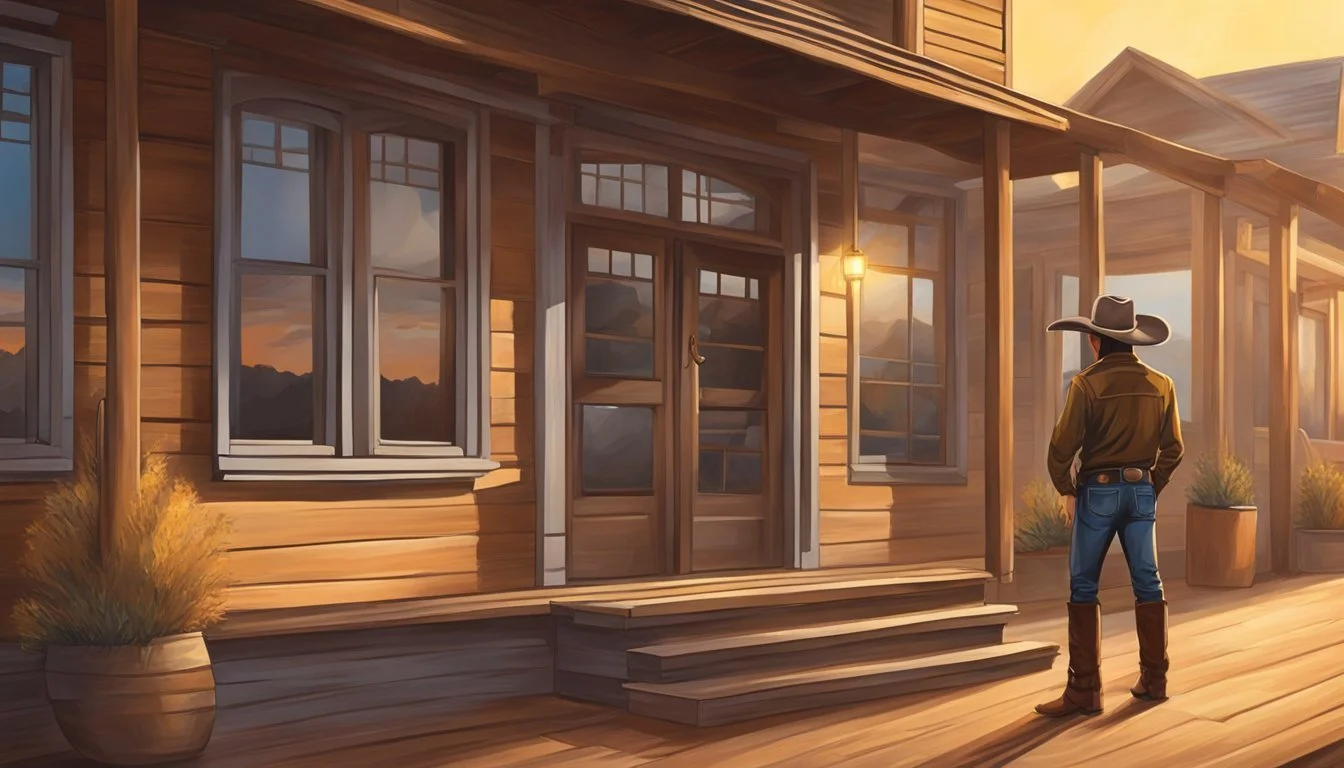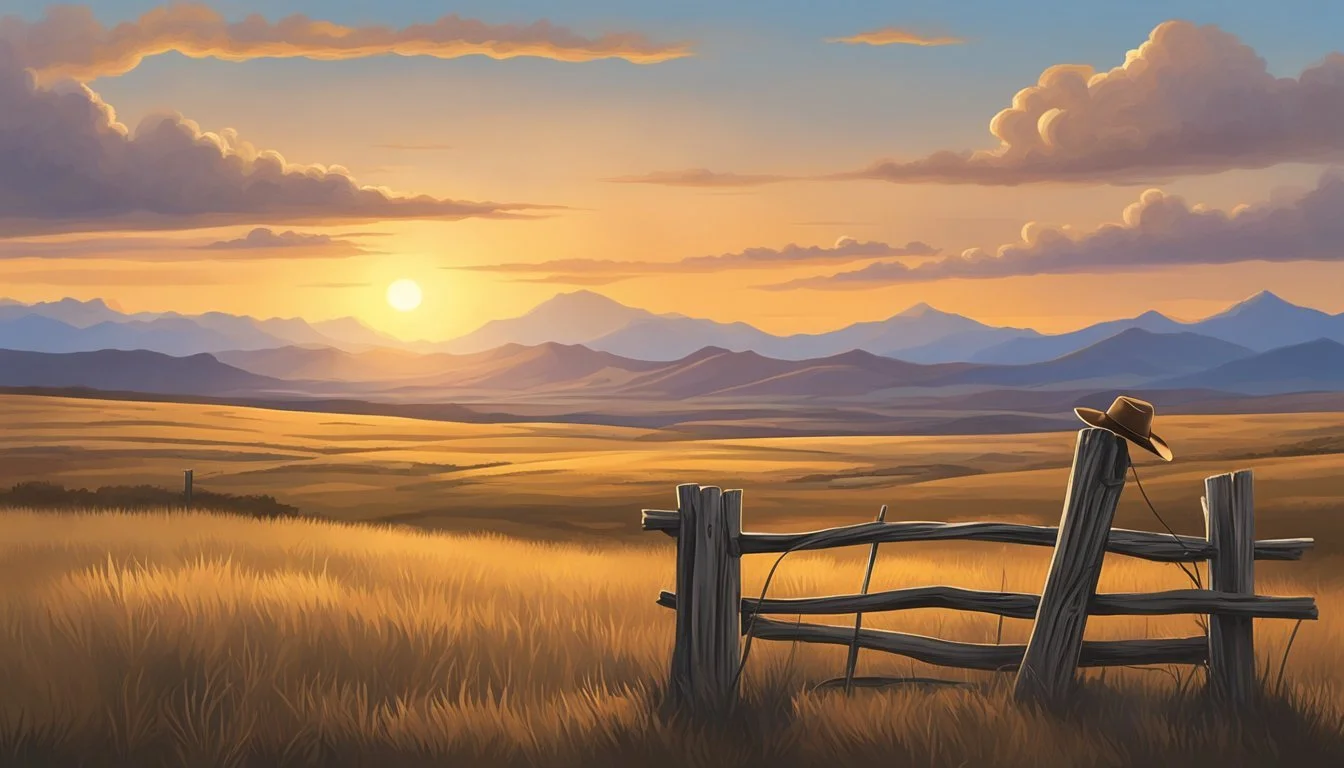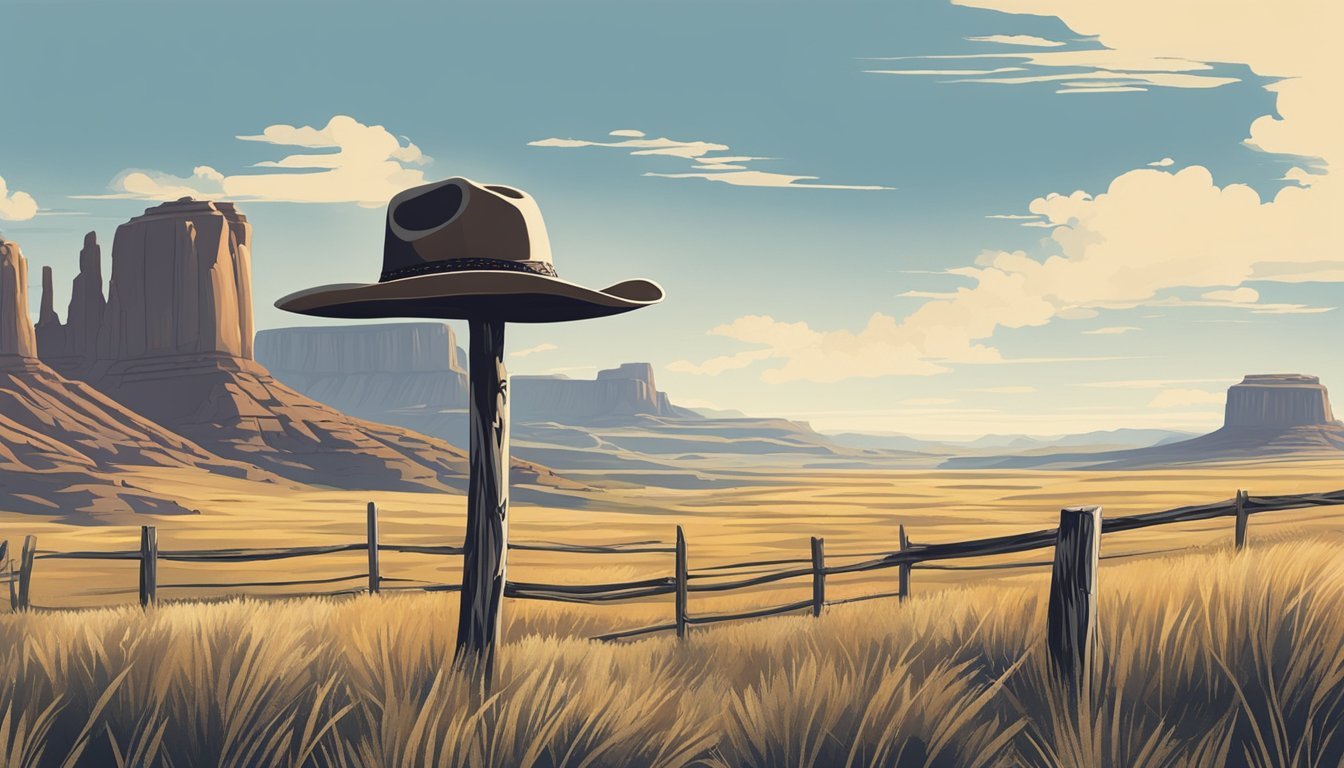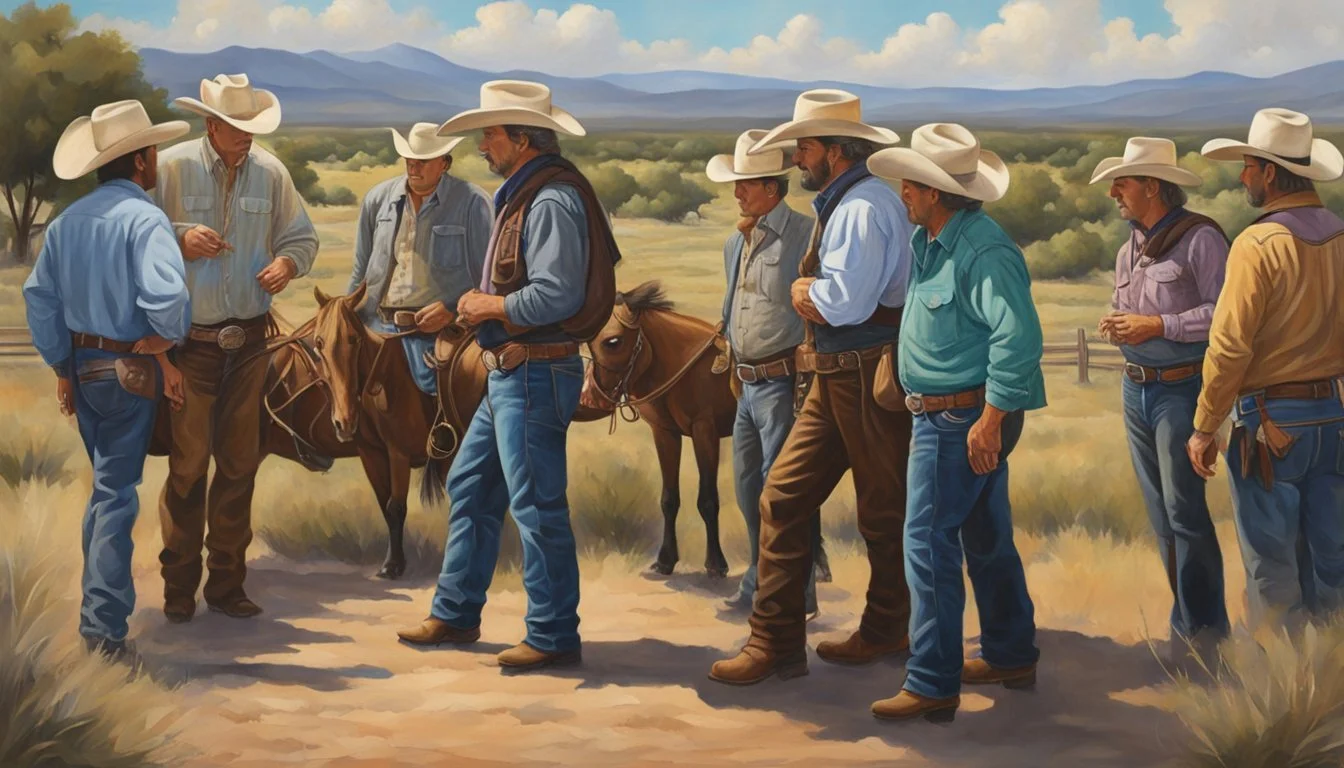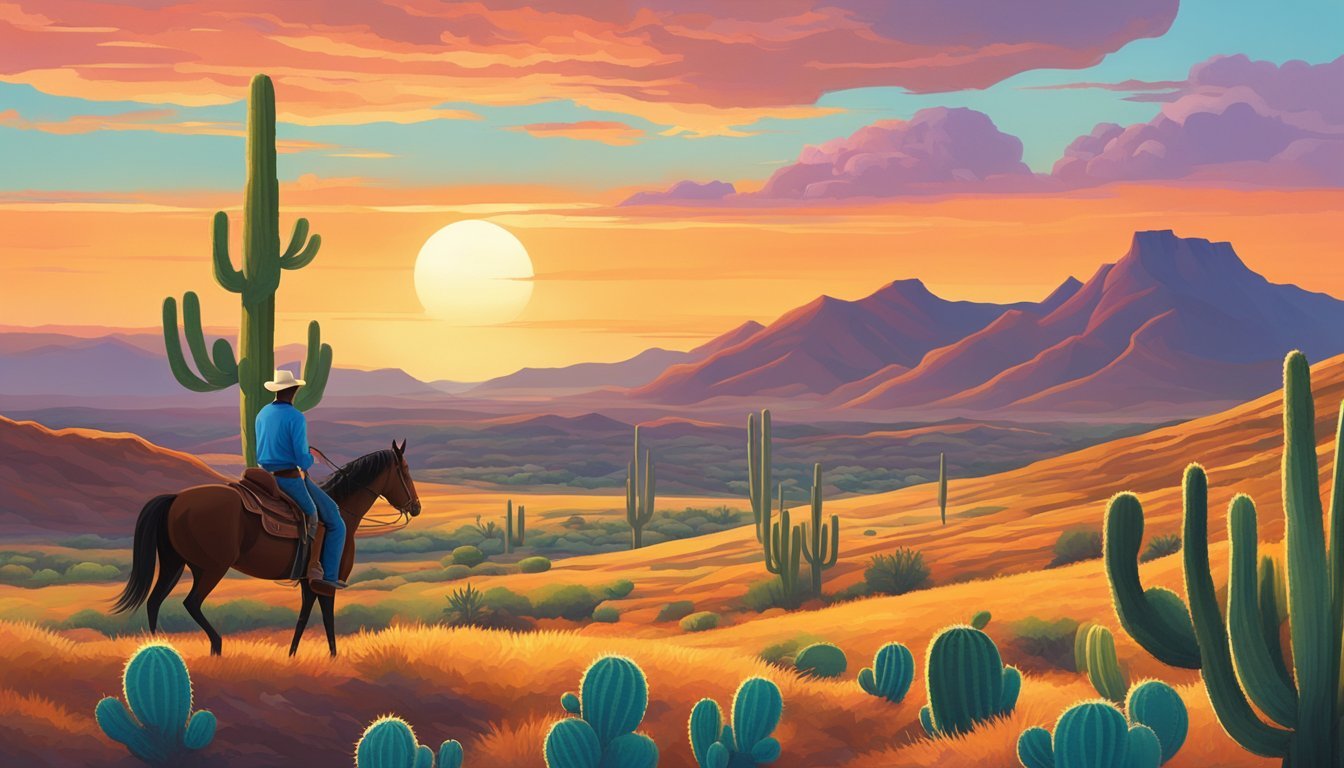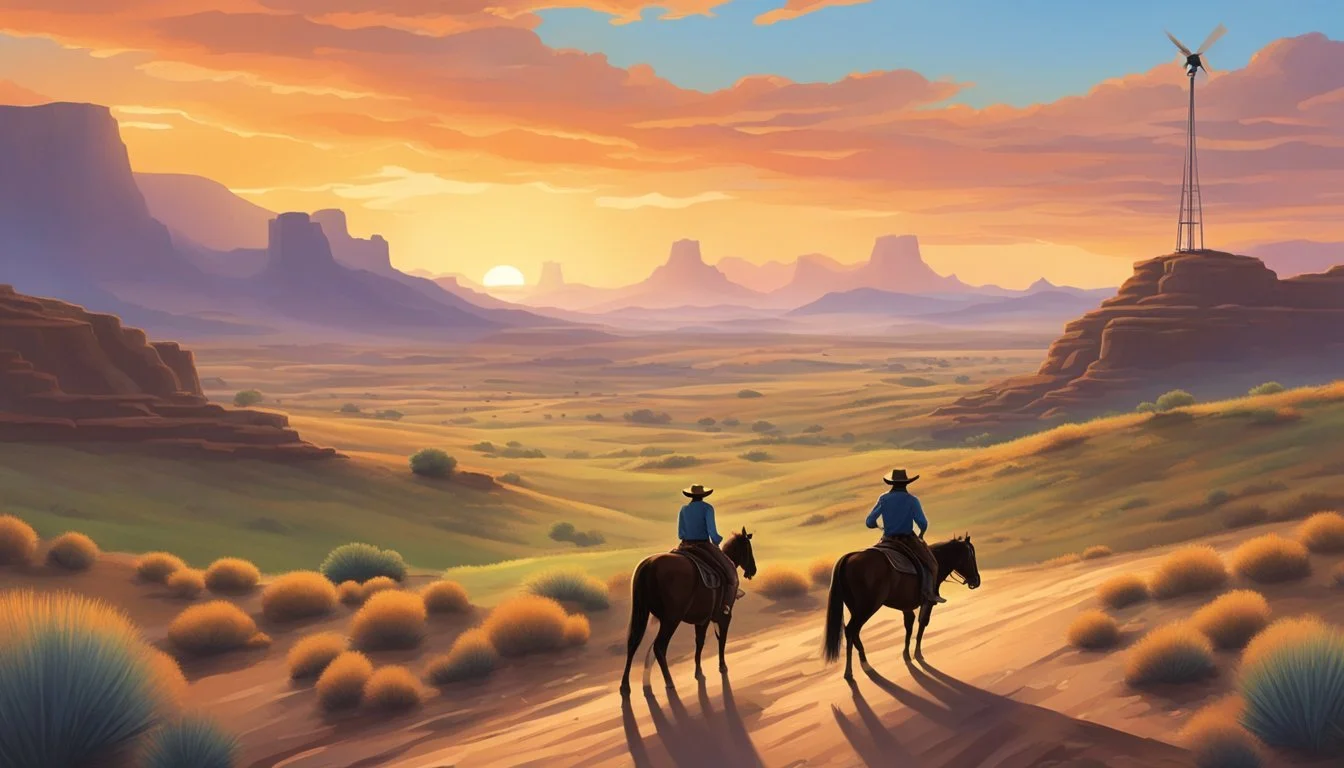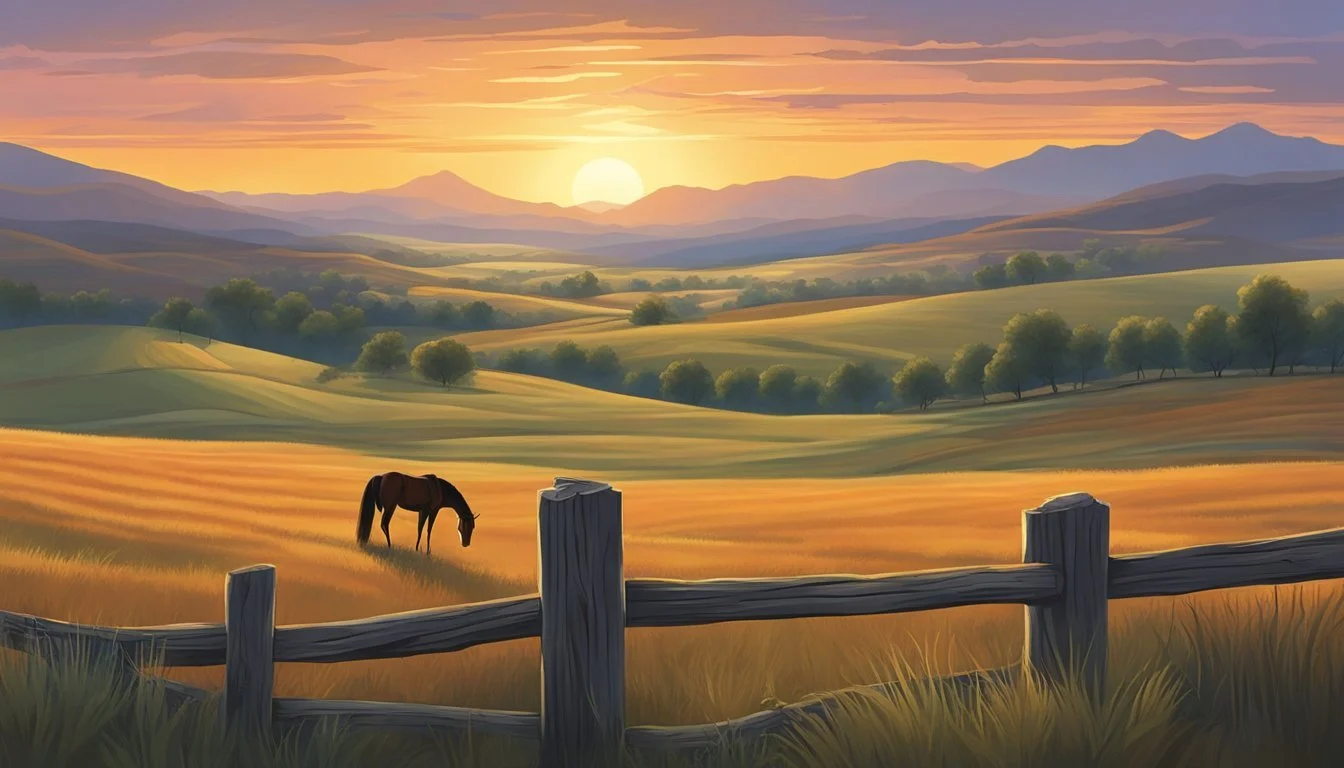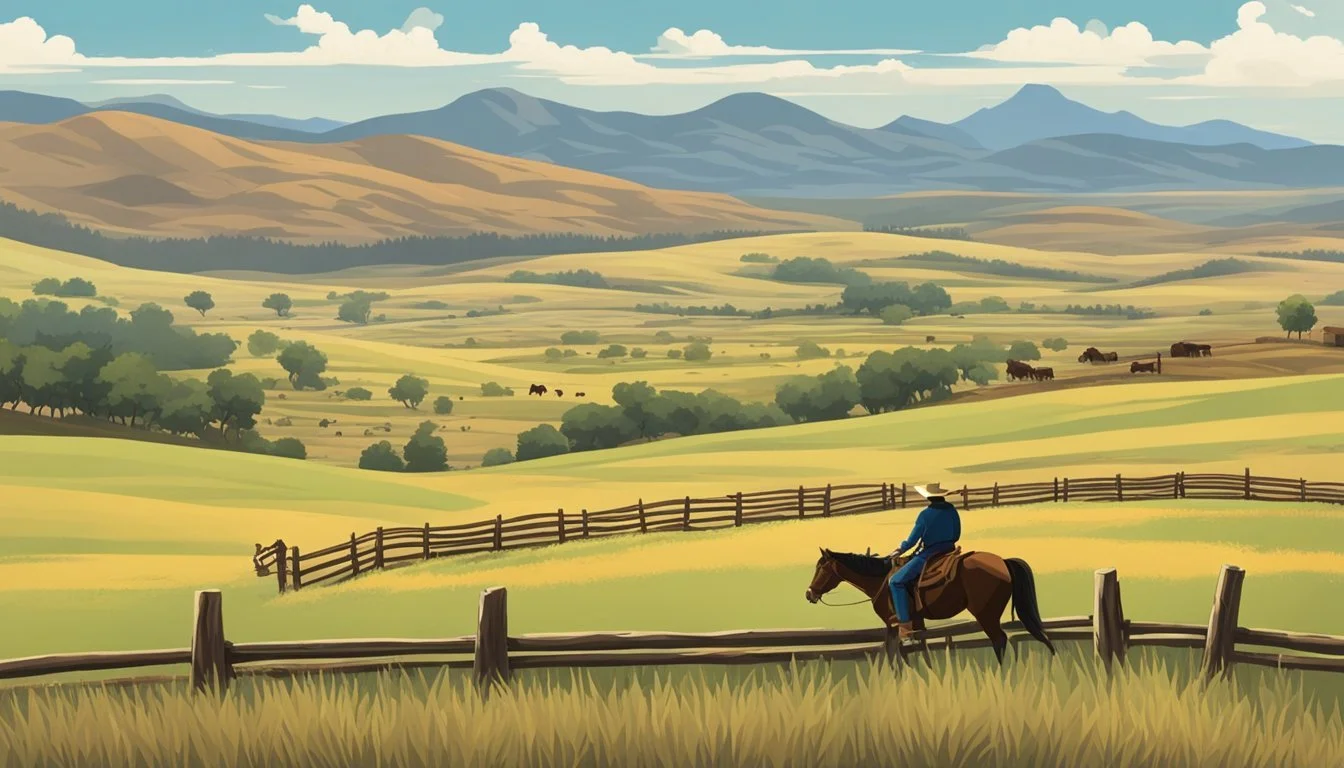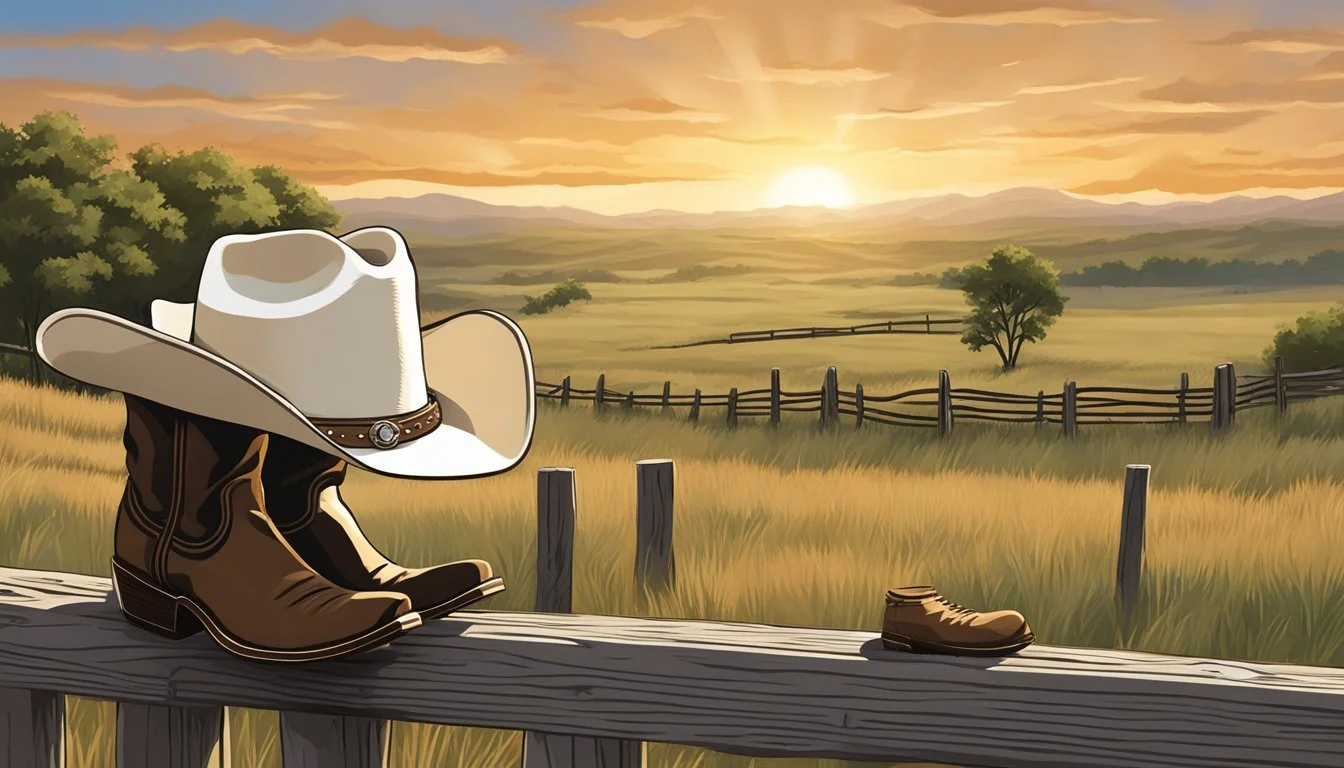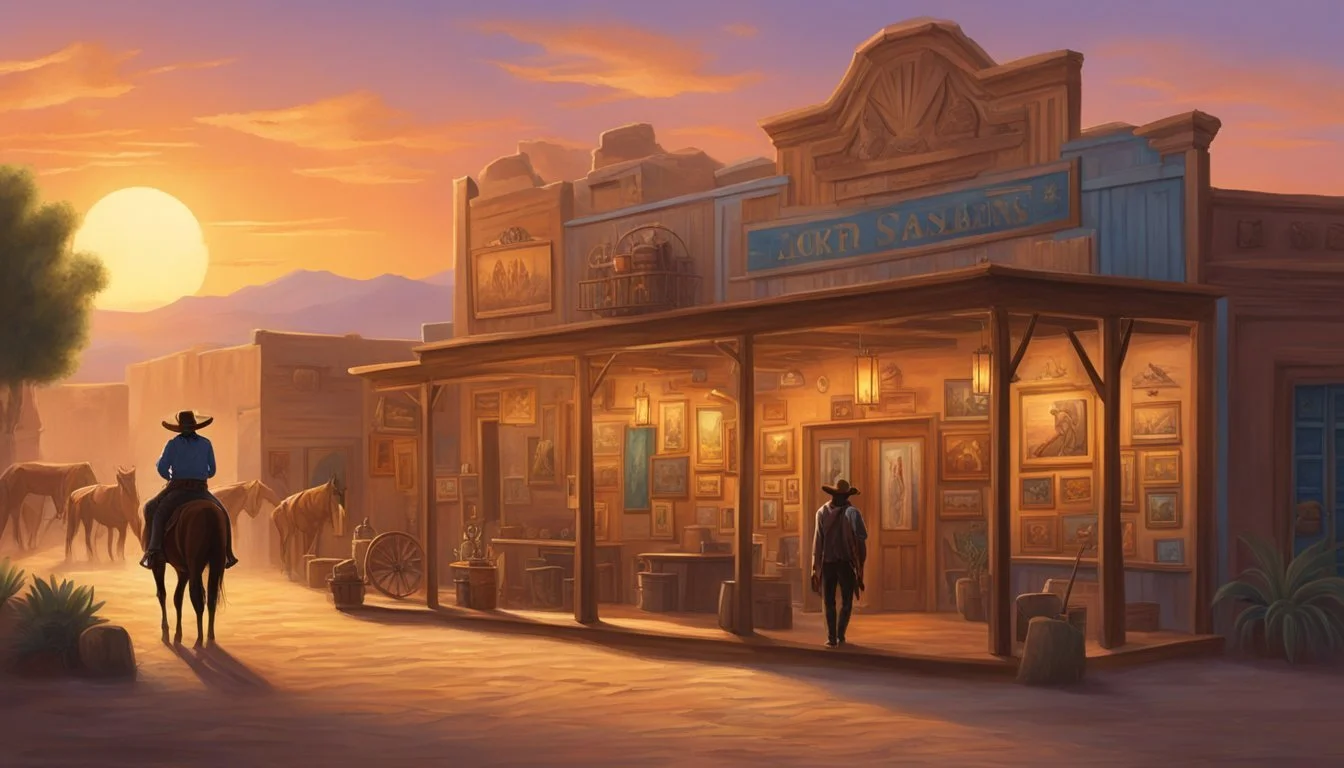The Texas Cowboy's Guide to Premier Western Art Galleries
Your Curated Route
Texas has long been a bastion of cowboy culture, a state where the legacy of the American West isn't just history, but a living element of daily life. This rich heritage is abundantly evidenced in the vibrant scene of Western art galleries throughout the Lone Star State. Spanning from depictions of the rugged desert landscapes and lively cattle drives to the more intimate portraits of the men and women shaping Western life, these collections capture the enduring spirit of the Texan cowboy.
For aficionados of Western art, Texas offers a breadth of venues celebrating this unique genre. In Kerrville, the Museum of Western Art is renowned for showcasing top Western artists, with their annual Roundup Exhibition and Sale being a highlight event that draws collectors and enthusiasts alike. Similarly, institutions like the Briscoe Western Art Museum in San Antonio ensure that female figures of the West are heralded in their own right, dedicating entire galleries to their contributions.
Exploring these enclaves of Western art is more than an aesthetic journey—it's an immersion into the stories and legends that have been carried on the dusty boots and weathered hands of cowboys for generations. Each gallery offers visitors a distinct perspective on what it means to uphold the traditions of the West and how contemporary artists interpret the myths and realities of cowboy life.
The Origins of Western Art
Western art captures the essence of the American West, chronicling its history, figures, and landscapes, with an emphasis on the unique cowboy culture that shaped the American cowboy.
Influential Figures in Western Art
In the evolution of Western Art, certain artists stand out for their depictions of the American West and cowboy culture. Frederic Remington and Charles M. Russell are two prominent figures whose works vividly brought to life the spirit of the Old West. Their art conveyed the ruggedness of frontier life and the quintessential American cowboy. Remington's dynamic sculptures and paintings often featured cowboys in motion, while Russell, known as 'the cowboy artist', shared a more narrative-driven portrayal through his detailed watercolors and oils.
Early Themes and Subjects
The subjects of early Western art were varied, but certain themes were predominant:
Landscapes: Expansive views of untamed wilderness and pastoral scenes.
Cowboy life: Rodeo scenes, cattle roundups, and campfire gatherings.
Native Americans: Representations of Indigenous peoples and their interactions with settlers.
Wildlife: Ecosystems of the West featuring its fauna, such as bison and mustangs.
This art genre sought to document and romanticize the progressively vanishing frontier, emphasizing the intrinsic connection between the land and its inhabitants.
Defining Characteristics of Western Art
Western art embodies a rich tapestry of history and storytelling, rendered through various mediums, and featuring iconic themes that resonate with both the romantic and rugged essence of the American West.
Artistic Techniques and Mediums
The artistic practices within Western art are quite diverse. Oil paintings stand out due to their vivid texture and depth, a technique prominently used by artists such as Frederic Remington and Charles Russell. These painters often captured the dynamic motion of the West with bold brushwork and a realistic palette. Bronze casting is another key medium, giving life to sculptures with intricate details and enduring presence. Meanwhile, watercolors provide a contrasting method, with transparency and fluidity that convey the atmospheric qualities of the vast landscapes.
Oil Painting: A preferred medium for its rich pigmentation and versatility, allowing for detailed expressions of light and shadow.
Bronze: Utilized in sculpture to produce permanent and lifelike representations of Western subjects, with a focus on durability.
Watercolors: Offer a lighter touch, capturing the fleeting moments and the essence of Western light and air.
Iconic Imagery and Motifs
A common thread in Western art is its imagery, deeply rooted in the locale and history of the American West. Artists depict scenes of cowboys, Indians, and vast landscapes, as well as portrayals of cattle drives and everyday life on the frontier. The works of Frederic Remington and Charles Russell illuminate these elements with authenticity, bringing to life the tension and serenity of Western scenes. The depiction of cowboys and Indians often reflects a narrative of adventure and conflict, while the vast landscapes underscore the untamed beauty of the territory.
Cowboys and Indians: Central figures in Western art, representing the human narrative of the West.
Vast Landscapes: Immense and often dramatic, these serve as a backdrop that is both challenging and awe-inspiring.
Prominent Western Artists and Their Impact
Western art galleries in Texas celebrate the grandeur of the American West, showcasing the legacies of artists who have captured its essence. These galleries feature masterpieces from individuals who have become synonymous with Western art, each contributing uniquely to its history and development.
Frederic Remington and His Legacy
Frederic Remington is an iconic figure whose dynamic sculptures and paintings immortalize the energy of the American West. His work mainly focuses on cowboys and their environment, often depicting them in action—whether in a quiet moment of reflection or amid the palpable tension of a nocturnal stand-off.
Key themes: The Wild West, cowboy life, the frontier
Notable works: "The Broncho Buster," "Fight for the Waterhole"
Impact: Remington's sculptures and paintings have profoundly influenced the perception of the Western cowboy, solidifying it as a symbol of American culture.
Charles M. Russell's Influence
Charles Marion Russell, often referred to as Charlie Russell, was a storyteller through art, whose earnest depictions of cowboy life resonate authenticity and respect for the land. Russell's profound connection to the West and its inhabitants shines through his detailed watercolors and oil paintings.
Artistic focus: Indigenous peoples, historical events, wildlife
Famous pieces: "A Quiet Day in Utica," "When the Land Belonged to God"
Legacy: Through his compassionate portrayal, Russell amplified the narrative of the American West, revealing its multifaceted nature and shaping Western art's evolution.
The Contributions of Maynard Dixon
Maynard Dixon, a painter of the early 20th century, is known for his bold, modernist interpretations of Western landscapes and figures. Dixon's distinctive style captures the stark beauty and vastness of the West, with cowboys often appearing as lone figures against sweeping backdrops.
Artistic hallmark: Broad brushstrokes, vivid colors, a sense of solitude
Selected art pieces: "Cloud World," "Earth Knower"
Influence: Dixon's art, in its stark simplicity, encapsulates the spirit of the American West, influencing subsequent generations of artists seeking to depict its harsh, yet majestic landscapes.
Texas and the American West
Texas's landscape and lore are deeply tied to the iconic imagery and history of the American West. The state's rich tradition of cowboy culture and its role in the westward expansion of ranching and cattle drives are cornerstones of this historical tableau.
Historical Significance
The state of Texas not only boasts vast tracts of land but also hosts pivotal landmarks of the American West, such as the Chisholm Trail. This trail was instrumental during the post-Civil War era, enabling cattle drives northward, turning Texas cattle into a vital economic resource. The very lifeblood of cowboy culture hails from these endeavors, where cowboys, alongside vaqueros (the original horsemen and cattle herders of Spanish Mexico), herded cattle across the rugged terrain. These drives not only shaped the land but also defined an era and the enduring image of the Texas cowboy.
Notable Cattle Trails from Texas:
Chisholm Trail: Major route from Texas to Kansas
Goodnight-Loving Trail: Extended to Wyoming and Colorado
Western Trail: Known for moving cattle to markets in Dodge City
Cultural Reflections in Art
Artwork in Texas reflects the cultural ethos of the American West, where representation of the land, cowboy life, and cattle are dominant themes. Museums such as the Sid Richardson Museum, the Amon Carter Museum, and the National Cowgirl Museum and Hall of Fame in Fort Worth, chronicle the influence of these elements through a diverse array of Western art. These museums house collections that capture the essence of the Texas experience, from vast landscapes to the daily life of the American cowboy.
Notable Western Art Museums in Texas:
Sid Richardson Museum: Focus on Western art and its storytelling
Amon Carter Museum: Showcases American art with a focus on the American West
National Cowgirl Museum and Hall of Fame: Celebrates women of the American West
The Evolution of the Cowboy Icon
The cowboy is a core symbol of American culture, with an image that has transformed significantly from its early origins to the present day. This iconic figure has not only embellished the narrative of the American West but also influenced various aspects such as apparel and artwork.
From Vaqueros to Modern Day Cowboys
The origins of the cowboy icon begin with the vaqueros, skilled horsemen and cattle herders from Mexico. They were the earliest cowboy progenitors, dating back to Spanish colonial times. Over the centuries, these figures evolved into what is now recognized as the American cowboy, a representation of resilience and adventure. The cowboy's transition into a modern-day icon carries the legacy of frontier life where they became the embodiment of hard work and independence in the vast, untamed landscapes of Texas.
Cowboy Gear and Apparel
Cowboy Hat: The most recognizable piece of the cowboy ensemble is the cowboy hat. Originating from 13th-century Mongolian designs, the hat was adapted to shield wearers from the harsh sun. The cowboy hat, often crafted with a high crown and wide brim, became a staple to protect cowboys from the environment.
Saddles and Spurs: Fundamental to the cowboy's daily life is their gear. Saddles were meticulously crafted to fit both horse and rider, providing comfort during long hours of cattle herding. Spurs, meanwhile, were essential tools for directing the horse on subtle queues during precise movements required in cattle work.
Art and Aesthetics: Cowboy art has carved a niche in America's cultural heritage, often portraying cowboys in the midst of bronc riding or showcasing their proficiency with lassos. These images, while stylized, reflect a rugged aesthetic that mirrors the cowboy's evolution from practical life into a cultural icon.
Apparel Evolution:
Early Gear: Simple, functional clothing including chaps and bandanas.
Present Day: Today, cowboy apparel merges tradition with modern flair, incorporating durable materials and intricate designs.
This guide aims to illuminate the trails blazed by cowboy icons and how their deeply-rooted legacy endures through functional gear and compelling art.
Western Art Galleries and Collections
Texas is a treasure trove of Western art, offering a myriad of galleries and collections that preserve the legacy of the American frontier. Here, aficionados can immerse themselves in a world of fine art that encapsulates the spirit of the Wild West.
Notable Western Art Galleries in Texas
Woolaroc Museum, Bartlesville, OK: Despite not being located in Texas, it holds an esteemed Western art collection and is a significant cultural site for anyone interested in the genre.
Museum Of Western Art, Kerrville: Hosts the "Annual Roundup Exhibition and Sale" with works from over 50 top Western artists, running until June 8, 2024.
The Briscoe Western Art Museum: Features a permanent collection with contributions from key figures in Western art and galleries that showcase new works and women's contributions to the West.
National Cowboy & Western Heritage Museum: Provides an in-depth look at Western heritage through its permanent galleries.
Caring for a Western Art Collection
Caring for a Western art collection requires diligence and an understanding of the materials and historical significance of the pieces.
Storage and Display:
Temperature and Humidity: Collections should be stored in environments with controlled temperature and humidity to prevent damage.
Handling: Minimize handling and wear gloves when necessary to prevent oils from damaging the artwork.
Maintenance:
Regular cleaning should be gentle and performed with the proper materials, ensuring artifacts and memorabilia are preserved without alteration.
Documentation:
Keep detailed records of each piece, including the artist's information, the provenance of the piece, and any restoration work that has been done.
By adhering to these practices, collectors safeguard the cultural heritage embodied in these works for future generations.
Western Art as an Investment
Investing in Western art requires an understanding of acquisition options and market venues where artworks are bought and sold. Knowledge of these aspects is crucial for anyone considering Western art as an investment.
Acquiring Western Art
Individuals seeking to invest in Western art can explore various channels for acquisition. Galleries specializing in Western art offer curated selections of paintings and sculptures, often with a focus on classic and contemporary artists who depict themes of the American West. Purchasing directly from artists or galleries ensures authenticity and supports the creative community. Additionally, investors should consider the reputation and history of the gallery to ensure they are dealing in high-quality artworks with provenance.
The Role of Auctions and Fairs
Auctions and art fairs play significant roles in the art market, providing platforms for the buying and selling of Western art.
Auctions: They offer diverse pieces from various artists and can range from local estate sales to high-profile events organized by major auction houses. Investors have the opportunity to acquire rare and valuable pieces, although it is advised to research the artworks and their estimated values before participating in an auction.
Auction Type Characteristics Local Estate Sales - Accessible - Potentially lower prices Major Auction Houses - Diverse artworks - Higher competition - Prestigious, with extensive catalogs
Art Fairs: These events bring together collectors, artists, and gallery owners, fostering a community around Western art. Fairs like the annual Roundup Exhibition and Sale in Kerrville offer opportunities to view and purchase works firsthand from top Western artists.
By engaging with auctions and fairs, investors can better understand market trends, connect with the art community, and make informed decisions when investing in Western art.
Living the Western Lifestyle
For those enthralled by cowboy culture, living the Western lifestyle is deeply rooted in ranching traditions and an appreciation for the cowboy aesthetics, from attire to home decor.
Ranching and Rodeo Culture
Ranching is the heart of the cowboy lifestyle, with cattle management and conservation of the land being paramount. Cowboys are skilled in the art of horseback riding and possess a deep understanding of wildlife behavior, which is essential for maintaining the health of both livestock and the range. The rodeo, which showcases skills like roping and riding, is not just a sport but a celebration of these proficiencies essential for the working cowboy.
Daily Ranch Life: Involves early mornings, animal care, and land maintenance.
Rodeo Events: Include barrel racing, bull riding, and team roping.
Western Decor and Fashion
The aesthetic of the Western lifestyle is reflected in both fashion and home decor. Cowboys often wear practical yet iconic clothing such as wide-brimmed hats and boots suited for the demands of ranch life. Western fashion influences extend beyond the functional, becoming a bold statement of identity.
Fashion Staples:
Hats: Wide-brimmed for sun protection.
Boots: Durable for work; stylized for events.
Home Decor:
Furniture: Often made from natural materials like wood and leather.
Artwork: Showcases Western scenes, from rodeo action to serene landscapes.
Living the Western lifestyle entails a commitment to the values and skills of the American cowboy, celebrated in both the arena and everyday life.
Preserving Western Heritage
Preserving the heritage of the Texas cowboy is essential to maintaining a connection to the state's storied past. Key to this endeavor are educational programs and events that instill appreciation for cowboy culture, alongside dedicated efforts to conserve and restore priceless artifacts and artworks.
Educational Programs and Events
Texas prides itself in enriching communities with a robust selection of educational programs and events focused on the cowboy way of life. The Chisholm Trail Heritage Museum in Cuero stands as a beacon for education, utilizing its location in a historic building to teach visitors about significant cattle drives and the evolution of the American cowboy. Elsewhere, events like rodeos and storytelling gatherings provide interactive and engaging ways to experience cowboy culture firsthand.
Interactive Workshops: Hands-on activities like leather crafting, roping techniques.
Living History Events: Enactments and demonstrations that bring cowboy traditions to life.
Cattle Drive Reenactments: Bringing the dusty trails and storied drives of yesteryears into today's context.
Conservation and Restoration Efforts
Initiatives dedicated to the conservation and restoration of Western art and artifacts play a pivotal role in keeping the cowboy legacy alive. Museums like the Museum of Western Art invest in preservation techniques to safeguard the rich tableau of cowboy history. They uphold standards for restoring artworks, thus ensuring that future generations can enjoy and learn from these cultural treasures.
Restoration Projects: Applying meticulous care to repair and maintain historic artworks.
Preservation Workshops: Educating the public on how to preserve Western artifacts.
Archival Techniques: Using state-of-the-art methods to prevent degradation of important historical items.
Museums and cultural centers across Texas actively conserve the essence of the West, blending education with preservation to honor the tradition and lore of cowboys.
Impact on Popular Media and Entertainment
The portrayal of Texas cowboys has had a significant effect on popular media and entertainment, especially within the Western genre in film and literature.
Western Genre in Film and Literature
The Western genre has long celebrated the cowboy as an iconic figure, both in film and literature. Film has particularly been a conduit for the cowboy's mythology, cementing its status as a symbol of rugged individualism and frontier justice. Classic movies like "The Searchers" and "High Noon" have showcased cowboys as the quintessential heroes of the American West.
Literature has also played a pivotal role in shaping the cowboy image. Novels such as "Lonesome Dove" and "The Virginian" delve into the lives of cowboys with a blend of romance and realism that has captivated readers for generations. These stories frequently explore themes central to the cowboy ethos, including bravery, solitude, and the relationship between humans and nature.
In contrast to the rugged solitude of cowboy life often featured in films and literature, the rodeo represents the communal and competitive aspects of Western culture. The rodeo brings together cowboys in a spirited display of skills like bronc riding, team roping, and bull riding, which stem from practical ranch work. This exciting spectacle frequently serves as an inspiration for scenes in Western media, highlighting the athleticism and spirit of the cowboy lifestyle.
Furthermore, Texas cowboys in film and literature often find themselves portrayed in surroundings that include sweeping landscapes, cattle drives, and the conflicts that arise at the intersection of lawlessness and justice. These elements work together, creating narratives that resonate with audiences and immortalize the cowboy in the cultural imagination.
The ongoing popularity of Western-themed films and books confirms the lasting impact that cowboys have on the arts, serving as a testament to the enduring appeal of this iconic American symbol.
Festivals and Events Celebrating Western Art
In Texas, cowboys and aficionados of Western culture are treated to an array of festivals and events that celebrate the rich heritage of Western art. From longstanding annual gatherings to vibrant rodeos that showcase artistic talent, the Lone Star State offers numerous opportunities to immerse in this storied tradition.
Annual Gatherings and Competitions
Stamford Art Foundation's Western Art Show: This event, esteemed as a principal Western art show in America, marks its celebratory 50-year milestone in 2023. It boasts a legacy of half a century in bringing Western art to West Texas and invites enthusiasts to partake in its jubilee event every June.
National Cowboy Symposium & Celebration (Lubbock, Texas): An annual event that delivers more than historical sessions and Western art exhibits. Attendees also enjoy educational and engaging activities, drawing crowds in the thousands who appreciate Western heritage and arts.
Rodeos and Art Showcases
Museum of Western Art (Kerrville): Known for its 40-year history in Western Art, the museum orchestrates an opening weekend filled with cultural presentations, including Native American dancers, chuckwagon chow, and live entertainment. April 22 - July 8, 2023, marks their latest exhibition period, kicking off with a proclamation from the Mayor.
Briscoe Western Art Museum (San Antonio): Since its inception in 2013, the museum has dedicated itself to preserving and celebrating the history and culture of the American West. Through engaging exhibits and educational programs, it regularly features special events that highlight the region’s Western heritage, encouraging visitors to explore their extensive calendar for upcoming Western art events.
Western Art Beyond Borders
Western art, characterized by its vivid portrayal of cowboy life, rugged landscapes, and the spirit of the Old West, holds a significant position in art history. This section discusses the global influence and the widespread appreciation of this genre.
Global Influence and Reception
Western art has transcended America's frontiers, captivating audiences worldwide. Global Influence is evident as the iconic cowboy hat emerges as a symbol of American Western culture, extending its reach far beyond Texas. This influence is seen in how western art is adopted and revered by various subcultures across the globe.
Influence Beyond Texas: The cowboy hat is an enduring symbol recognized internationally. It embodies the pioneering spirit characteristic of the Old West. Its adoption across multiple subcultures showcases the extensive reach of western art.
Reception: Western art receives acclaim well outside the United States. Exhibitions and collections of Western art in international venues underscore its appreciation. For instance, Western art shows in places like Arizona, Montana, and Texas draw visitors from across the country and the world, demonstrating the genre's widespread allure.
The Future of Western Art
In the realm of Western art, the landscape is shifting as emerging artists bring new perspectives and innovative techniques to traditional themes.
Emerging Artists and New Directions
The Texas cowboy art scene is witnessing a resurgence as new artists paint the canvas of the future with contemporary strokes. They merge reverence for the land and the West with modern expressions, showcasing a dynamic evolution of the genre. As the Western art community looks towards the horizon, it embraces this blend of tradition and innovation.
David Grossman is an example of an artist introducing bold, contemporary points of view to Western art.
The Museum of Western Art in Kerrville anticipates showcasing over 140 original works in their Annual Roundup Exhibition, reflecting a broad tapestry of artistic voices and styles.
Western art's trajectory is carved by such contributors, ensuring its vitality and relevance to both long-time enthusiasts and new audiences.
While honoring the heritage of the American West, these artists are defining the contours of the genre's future. Through exhibitions and galleries that celebrate Western art, Texas continues to be a crucible for this enduring yet ever-evolving art form.

